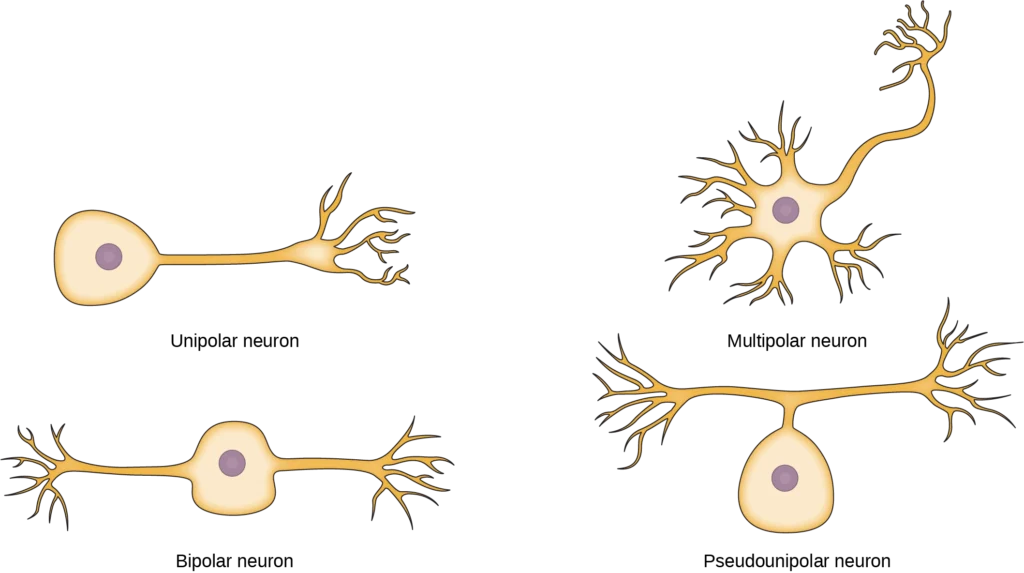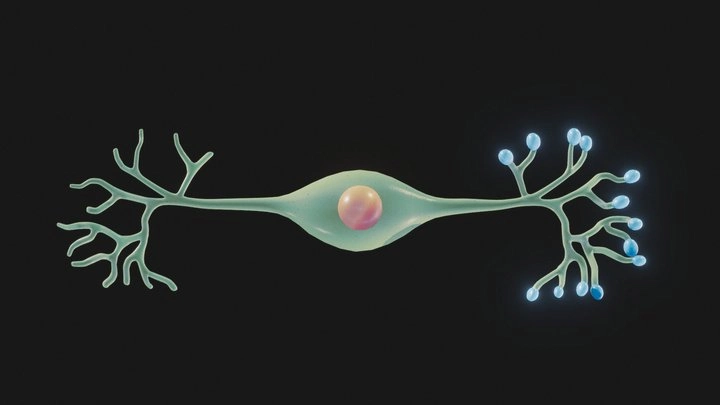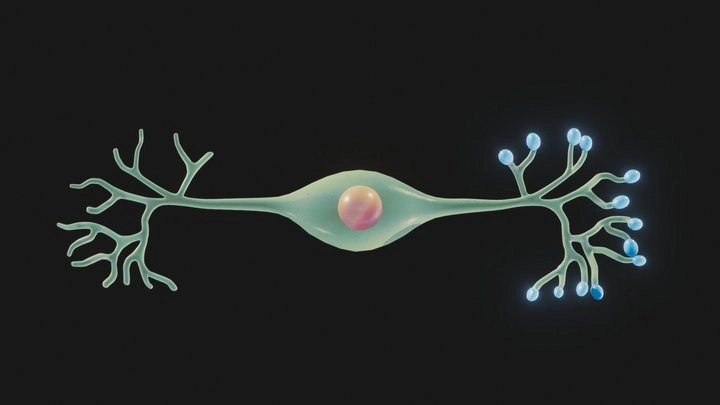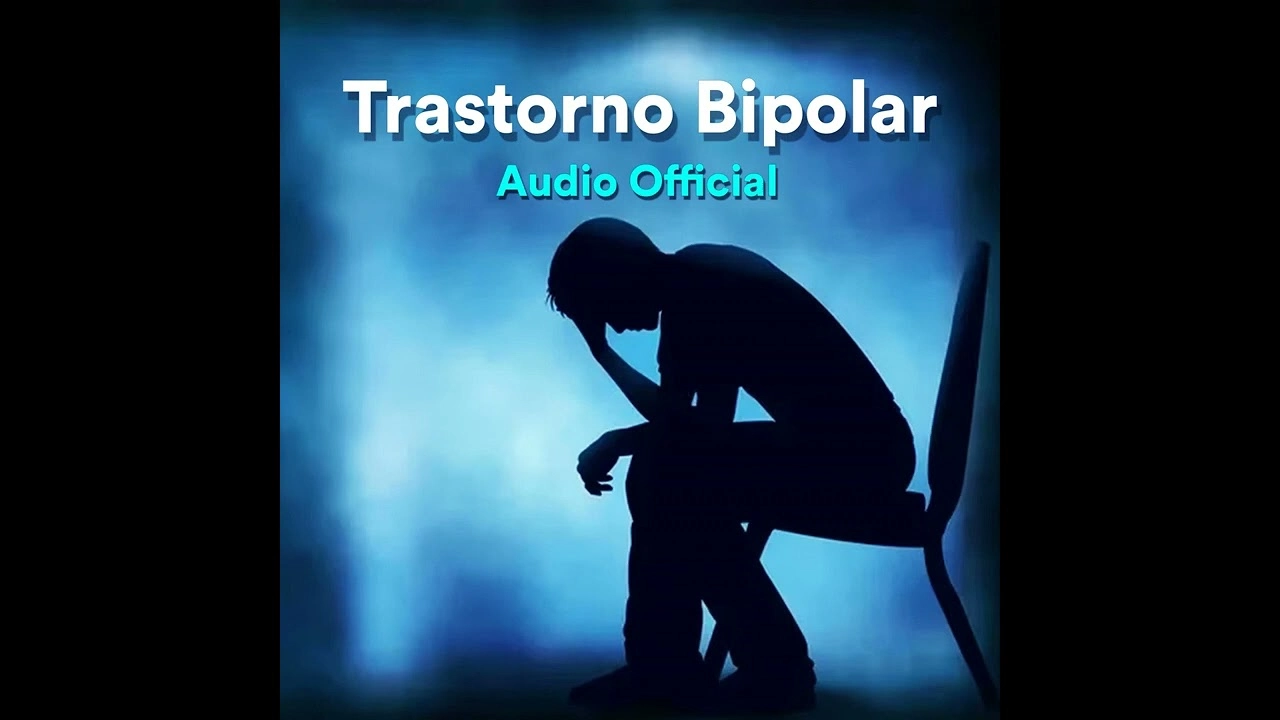Bipolar Neurons: Understanding Bipolar Neurons: Structure, Function, and Importance in the Nervous System. Essential for the operation of sensory systems, bipolar neurons are a particular kind of nerve cells. Found mostly in the retina, olfactory system, and vestibular pathways, these special neurons are essential in conveying particular sensory information from the surroundings to the brain.

Though not as many as multipolar or unipolar neurons, bipolar neurons are vital for handling different sorts of inputs, especially in vision and smell. This complete instruction will examine the anatomical makeup of bipolar neurons, their differences from other neurons, their location, and their importance in neurobiology and sensory biology.
Bipolar Neurons
One axon and one dendrite define bipolar neurons, which are a kind of neuron distinguished by two distinct extensions. This architecture differentiates them from other neurons, which often feature several dendrites (multipolar neurons) or just one extension (unipolar neurons).
In bipolar neurons, the dendrite gathers sensory information and sends it to the cell body; the axon sends the message away from the cell body toward other neurons or the central nervous system. For specific kinds of sensory processing, this basic, straight structure is very effective.
Main Features of Bipolar Neuron
The form of bipolar neurons defines them. From opposing sides of the soma (cell body)
- Mostly occupied in sensory signal transmission
- Have a compact, streamlined architecture that aids quick, effective signal relay
This bipolar design is ideally suited for specialized sensory organs where accurate information must be rapidly and precisely transmitted since it allows direct and targeted signal transfer.
Where are bipolar neurons?
Mostly found in sensory pathways, bipolar neurons are not especially common in the nervous system. Among the most famous sites are:
1. Retina of the Eye
Visually, bipolar neurons in the retina are very important. Between photoreceptors (rods and cones) and ganglion cells, they serve as mediators. Photoreceptors sense light; bipolar neurons relay this information to ganglion cells, which then send visual signals to the brain through the optic nerve.
2. Olfactory Epithelium
Bipolar neurons enable detection of scents in the olfactory system. These neurons relay olfactory information from olfactory receptors in the nasal cavity to the olfactory bulb, where the brain starts interpreting scent-related data.
3. Vestibular Ganglia and Cochlea
Bipolar neurons convey sensory data from the inner ear to the brainstem in the auditory and vestibular systems, pertaining to hearing and balance.
Interacting with the environment requires interpretation of visual, olfactory, and auditory inputs—all of which depend on these sensory neurons.
Bipolar Neurons Versus Other Neuron Types

It’s useful to contrast bipolar neurons with other main types of neurons in order to fully understand their significance:
Multipolar Neurons
- Possess one axon and several dendrites
- Most often found in the brain
- Discovered in motor neurons and interneurons
- Help to merge data from several sources
Unipolar (pseudounipolar) Neurons
- Have one extension split into two branches
- Frequently seen in dorsal root ganglia
- Mainly involved in somatic sensation, like touch and temperature
Bipolar Neurons
Having just a dendrite and one axon
Just made specifically for sensory pathways
Giving out a more direct communication path; and is perfect for precise signal relay.
Every kind of neuron has been developed physically to match its role in the nervous system.
Functional Significance of Bipolar Neurons
Bipolar neuron dendrite-cell body-axon structure’s linear pathway makes them very effective conduits for certain kinds of sensory input. Their main purposes are:
- Conveying brain retinal visual signals
- Sending olfactory signals to the olfactory bulb
- Passing auditive and balance signals from the inner ear
Bipolar neurons are essential in making sure the brain gets clear, unambiguous sensory input needed for perception and response since they specialize.
Anatomy of Bipolar Neurons
Bipolar neurons include several anatomical elements, each with a particular job:
- Transforms incoming signals, including scent or light molecules, into electrical impulses.
- Body of the soma, cell body
Integrates the incoming signals from the dendrite; houses the nucleus and other cellular organelles. - Carries the integrated signal from the soma to the synaptic terminals, where it contacts with another neuron or a target cell.
Clear directionality of signal flow is made possible by the separation of dendrites and axon in bipolar neurons, which is crucial for preserving fidelity in sensory signal transmission.
Clinical Importance of Bipolar Neurons
Damage or malfunction of bipolar neurons can cause a range of sensory impairments. For example:
- Vision impairment can result from impaired bipolar neuron activity in retinal illnesses such retinitis pigmentosa or macular degeneration.
- Damage to bipolar cells in the nasal cavity can cause olfactory disorders, which will lead to anosmia (loss of smell).
- Disruption in bipolar neurons of the vestibular or cochlear pathways might cause auditory and balance problems.
Understanding bipolar neuron structure and activity helps doctors create focused therapies for sensory deficits as well as direct the creation of assistive devices including retinal implants.
Bipolar Neurons Under Investigation in Neuroscience
Because of their unusual structure and function, bipolar neurons are frequently investigated in neuroscience. Studies on these neurons help us to understand:
- Development and differentiation of neurons, especially in sensory systems
- Synaptic transmission and signal processing
- Neurodegenerative diseases affecting sensory function
Exploration of bipolar neuron activity both in vivo and in vitro often uses advanced approaches including patch-clamp electrophysiology and molecular imaging.
Closing Remark
Though not as many as some other neuronal types, bipolar neurons are vital in sensory processing. Their simple architecture helps quick, direct interaction between sensory receptors and the brain, therefore making them major players in vision, smell, and balance.
Continued research on bipolar neurons will help scientists to better grasp how the brain handles the outer environment, therefore paving the way for new treatments in neurotherapy and sensory rehabilitation. Bipolar neurons demonstrate how shape and utility combine to help life’s most vital sensory experiences from their beautiful design to their basic operations.







